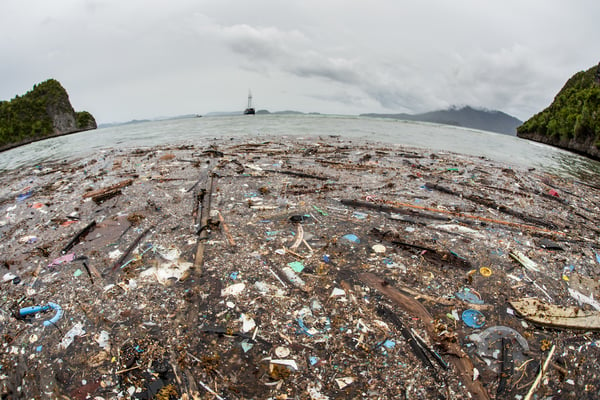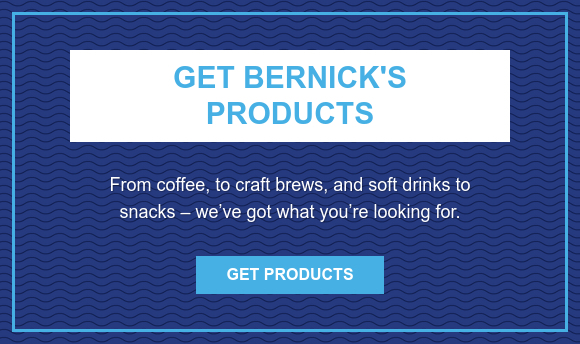Losing the Plastic Without Losing Customers
There’s a floating island in the middle of the Pacific Ocean that’s as big as two Texas states put together. It weighs more than 79,000 tons, and 99.9% of it is plastic.
It’s called the Great Pacific Garbage Patch.
 Naturally, the giant plastic island (and other oceanic trash collection areas) is a nasty sight to see, and everyone would agree that we’d be better off without all that plastic trash floating in the oceans. Mixed in with the plastic bottles, containers, lids, bottle caps, packaging straps, ropes, and fishing nets are millions of drinking straws. So, what’s the world to do?
Naturally, the giant plastic island (and other oceanic trash collection areas) is a nasty sight to see, and everyone would agree that we’d be better off without all that plastic trash floating in the oceans. Mixed in with the plastic bottles, containers, lids, bottle caps, packaging straps, ropes, and fishing nets are millions of drinking straws. So, what’s the world to do?
And why pick on straws?
According to environmental activists, as well as cities, states, countries, and companies already on board with bans, the common straw is simply regarded as “a good starting place.” See more about this global movement at Our Last Straw.
Of all the one-time-use disposable plastic items in the world, a straw is one of the least necessary. Although some members of the disabled community and occasionally some elderly individuals need straws for drinking, most people can live without sucking their beverage through a straw. Ban supporters agree that a movement to reduce ALL disposable plastic items must begin somewhere, and the straw is where it’s at.
Big names sign up
Starbucks made big news when they announced their plan to eliminate all plastic straws from their stores by 2020. They describe it as “forward-thinking in tackling the material waste challenge” and expect to eliminate more than 1 billion plastic straws each year from their 28,000+ stores around the country.
Other brands on board
One food service provider for schools, prisons, hospitals, and businesses has vowed to reduce its straw use 60% by 2020. They will still make straws available to people with disabilities who need straws, which is a concern of the straw-ban-movement. The company also said they’ll cut back on plastic cutlery, bags, and other one-time-use plastic packaging.
Others joining companies like these are:
American Airlines — Replacing plastic straws on planes with biodegradable alternatives.
Alaska Airlines — Replacing plastic straws with sustainable, marine-friendly alternatives.
Hyatt — Will only make plastic straws available by request.
Royal Caribbean — Eliminating plastic straws on all 50 ships and will offer paper straws upon request.
Hilton — Removing plastic straws from 650 properties with hopes to cut its environmental footprint in half by 2030.
Marriott — Removing plastic straws from more than 60 of its UK hotels.
SeaWorld — Eliminating single-use plastic straws and bags at all 12 theme parks to help “protect animals and habitats worldwide.”
In addition to these companies, many U.S. cities like Miami Beach, Seattle, Oakland, and Berkeley have enacted plastic straw bans.
The business impact
Owners of restaurants, bars, coffee shops, convenience stores, and other dispensaries of refreshing beverages will have to adapt as plastic straw bans become more widespread. This affects us at Bernick’s, too, since we serve our customers with straws and other plastic products. Here are three ways we can all weather the straw storm:
1. Don’t panic
Everyone will get through this change together. Remain optimistic. And remember: for most customers, straws aren’t necessary equipment for drinking. Depending on your business, you might end up saving money by eliminating the cost of straws at your establishment.
2. Choose alternatives
 Straws made from paper, metal, and bamboo are already out there. Once consumers get used to policies where straws are available upon request, you can offer them an alternative tube. You may be surprised by how few actually make the request.
Straws made from paper, metal, and bamboo are already out there. Once consumers get used to policies where straws are available upon request, you can offer them an alternative tube. You may be surprised by how few actually make the request.
3. Create a profit center
Some crafty establishments have realized they can sell branded glass or stainless steel straws to customers. They’re not throw-aways, and conscientious consumers actually “own” their straws with feel-good pride. If that straw is imprinted with your brand, it can become a solid marketing investment.
As already noted, straw bans are just the beginning of a bigger mission to reduce one-time-use plastics. There will be some growing pains for businesses as the movement evolves and spreads to more markets, but hang in there. If plastic straws ultimately become a distant memory, so will the hassles you face along the way.



